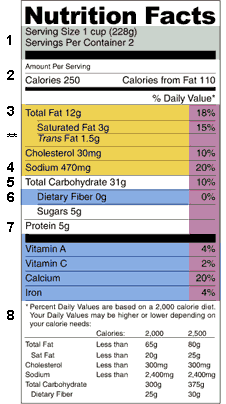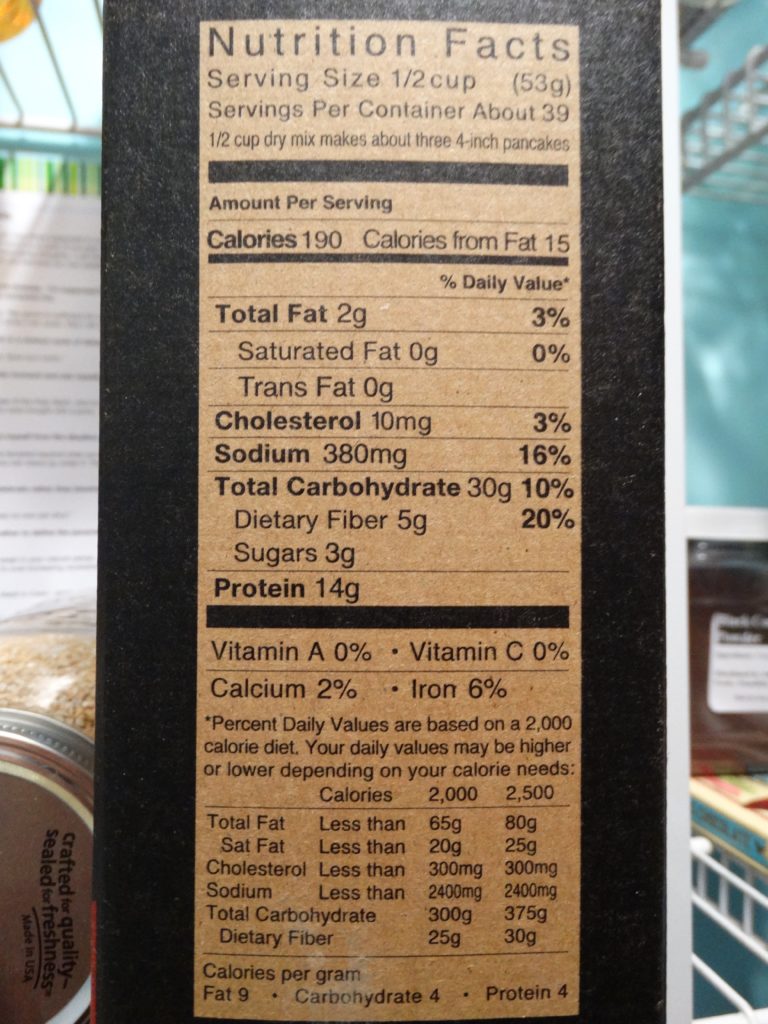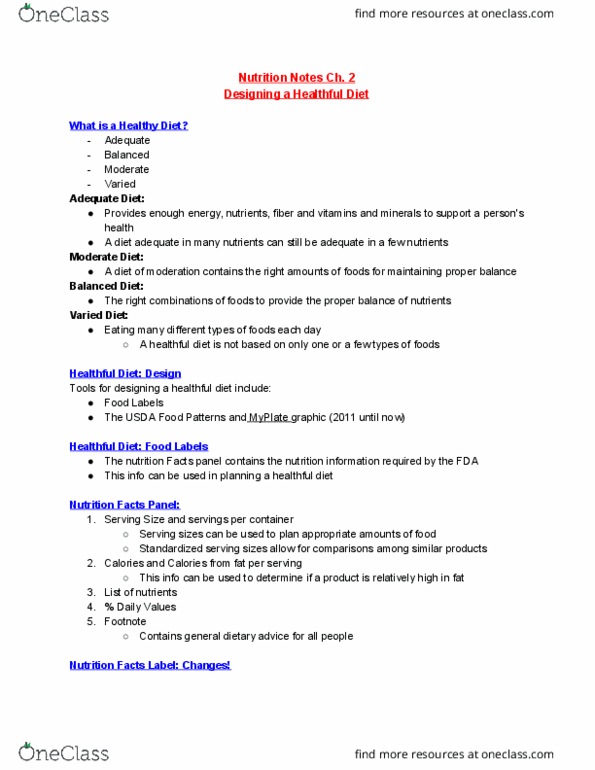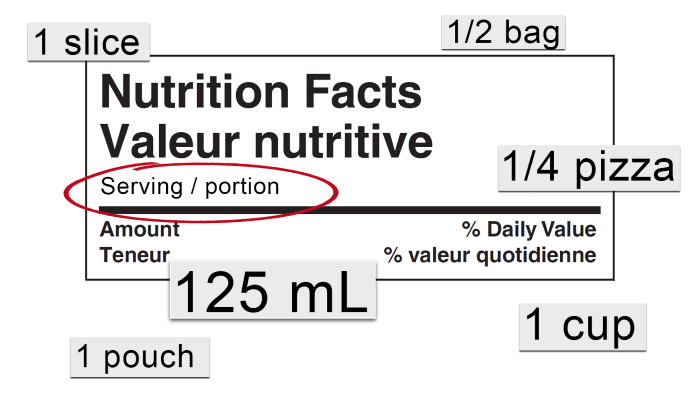44 why are serving sizes standardized on food labels
Why do food labels have standardized "serving sizes" and "servings per ... Why do food labels have standardized "serving sizes" and "servings per container" listed on label? ANSWER 0 colbib ANSWERS: 1-Icy-so you know how much to eat and also tells you how many ppl can eat that amount before it is gone. you have a cup of noodles serving size is 1/3 cup than you can get 3 servings from container. helps with meal ... Portion Size Versus Serving Size | American Heart Association Serving Size is the amount of food listed on a product's Nutrition Facts label. So all of the nutritional values you see on the label are for the serving size the manufacturer suggests on the package. Once we understand the difference, it's easier to determine how much to serve and easier to teach kids the difference between the two.
How to Understand and Use the Nutrition Facts Label - FDA Serving sizes are standardized to make it easier to compare similar foods; they are provided in familiar units, such as cups or pieces, followed by the metric amount, e.g., the number of grams (g)....

Why are serving sizes standardized on food labels
Your Ultimate Guide to Measuring and Understanding Portion Sizes ... Serving = A standardized amount of food, used on nutrition labels. These are usually based on "recommended amounts." Portion = The amount of food YOU choose to eat. So let's apply that to one of my favorite foods, ice cream! If you look on a nutrition label, the SERVING size is 1/2 cup. Consumer Survey: Understanding Portion and Serving Sizes Regardless of food or beverage category, about half say they try to eat close to the serving size listed on packaging. The top-ranked reasons for paying attention to portion sizes are to help control weight (36% ranked in top 2) and to help avoid eating too much of certain foods (30%). FDA Food Product Labeling & Packaging Requirements - ESHA Food Product Labeling and Packaging 101. The FDA regulates most packaged foods sold in the United States and has specific requirements for what elements a package must contain (e.g. a Nutrition Facts panel, ingredient statement, etc.). In order to sell your food products, you must comply with the FDA's packaging laws unless your operation is ...
Why are serving sizes standardized on food labels. Serving Size vs Portion Size Is There a Difference Serving size is a standardized amount of food. It may be used to quantify recommended amounts, as is the case with the MyPlate food groups, or represent quantities that people typically consume on a Nutrition Facts label. Portion size is the amount of a food you choose to eat — which may be more or less than a serving. IFIC Study Serves Up Reality Check on Serving, Portion Sizes January 26, 2022 IFIC Study Serves Up Reality Check on Serving, Portion Sizes (Washington, D.C.)— We've all seen "serving size" listed at the top of the Nutrition Facts label. But what exactly does that mean? What about the term "portion size"? The International Food Information Council (IFIC) has conducted a new survey to gauge how much consumers know — and, importantly, whether ... 7 Presentation of Nutrition Information on Food Labels - NCBI Bookshelf Serving Sizes on Food Labels. ... Serving sizes should be standardized across food categories on the basis of volume or weight measures. For example, milk beverages should be listed in 1-cup servings, whereas breakfast cereals may be standardized by weight (e.g., 1 oz), as long as the corresponding volume measure is specified (e.g., 1 cup or 2 ... Why Are Serving Sizes on Nutrition Labels So Small? The serving sizes on the nutrition labels for some foods are unrealistically small, especially for foods high in fat, sugar, or sodium. Are the small sizes an effort to minimize those contents?...
F.D.A. Weighs Update to Standard Serving Sizes - The New York Times On today's food packages, many of the serving sizes puzzle even the experts. ... But the calorie count refers to a one-ounce serving, and the label says the bag holds one-and-one-third servings ... Differences between EU and US nutrition labels go far beyond ounces and ... In the US, nutritional labels must indicate the number of servings per container - so calories are broken down based on how many slices of bread come in a package, or how many 12-chip portions a... IFIC Study Serves Up Reality Check on Serving, Portion Sizes The ways people control their portion sizes vary: Similar numbers said they try to eat more slowly (34%), stop eating once they feel full, even if there's still food on their plate (34%), use ... More Realistic -- Serving Sizes for Food Labels - HuffPost FDA Proposes Larger -- More Realistic -- Serving Sizes for Food Labels The FDA is proposing to change the standard serving sizes to reflect what people actually eat. The FDA defines the current serving sizes as amounts of foods commonly consumed based on dietary intake surveys conducted in the 1970s and 1980s. By Dr. Lisa Young, Contributor
Food Label Flashcards | Quizlet Serving Size and serving per container Serving sizes are supposed to be standardized to reflect the amt of food people actually eat, but sometimes they are quite unrealistic. How to find out calories # of calories x servings per container 90 x 4 = 360 calories How to find percent of calories from fat calories from fat / calories 30 / 90 = .33 = 33% The Importance of Reading the Food Label and Nutritional Facts Going forward, the serving sizes must be based on what people are actually eating, not what they should be eating. And for packages that are between one and two servings, the rest of the caloric and nutritional information must be labeled as a single serving since people tend to consume these size packages in one sitting. PDF Understanding Portion and Serving Sizes - Food Insight Serving sizes appear on the Nutrition Facts label and sometimes on the front of food packaging, and they are used to calculate the nutrient information displayed on the label (such as calories, totalfat or dietary fiber per serving). Refer to this image of a Nutrition Facts label as an example. Nutrition Facts Matter: What Food Labels Mean (and Why They Changed) Pay extra attention to the serving size. This is often one of the most overlooked items on the nutrition facts label. An official serving may be smaller that you think. A "serving" is different from a "portion." A serving is a measured amount of food. A portion is the amount you decide to actually eat for a meal or snack.[2]
The FDA's New Nutrition Labels Make So Much More Sense - Shape Credit: Food and Drug Administration Even if serving sizes might sometimes seem arbitrary, they're standardized based on what the FDA calls the reference amounts customarily consumed (RACC). Those numbers are based in part on national survey results, so they're subject to change.
Serving Size vs. Portion Size, What's the Difference? - Prevention A serving size is defined as a standardized, measured amount of food. This is most commonly used by the United States Department of Agriculture (USDA) in reference to food groups or printed on...
'Portion Size' and 'Serving Size' Are Not the Same: Why It Matters "Serving size" is based on a standardized amount of food or drink which is established by research done on the eating habits of adults and children. Understanding the difference between portion...
There's a Difference Between 'Portion Size' and 'Serving Size' A "portion" is defined as "the amount of food served or provided for consumption at one time". A "serving" is defined as "an amount of food or drink that constitutes an individual's basic daily requirement". For many food products, the serving size is often smaller than the portion. Sticking to these recommended servings can ...
Serving Size on the New Nutrition Facts Label | FDA - U.S. Food and ... Some serving sizes have changed on the new Nutrition Facts label. By law, serving sizes must be based on the amount of food people typically consume, rather than how much they should consume....
Serving Sizes In The Food Guide Pyramid And On Food Labels In comparison, the serving sizes on the food label are standardized to help you compare similar products. The Food and Drug Administration (FDA) based these reference serving sizes on the amount of the food item typically eaten in one sitting, derived from nationwide food consumption surveys of Americans.
Who Decides Serving Sizes? | HuffPost Life A serving size is a measurement that allows food manufacturers to create accurate and uniform nutrition labels across brands. It is not a prescriptive size that relates to health.
Definition and Importance of the Serving Size | Healthfully The serving size creates a standard reference used on food labels. Importance The standardized serving size is one tool you can use to be sure you're following a healthy, balanced diet. The United States Department of Agriculture determined that nutritional values be contained in the defined serving size.
Why it is Important to pay attention to Serving Sizes - MenuSano Serving sizes are based on reference amounts, which are the amounts of foods and drinks that people typically consume. It's essential to pay attention to serving sizes because they can help you control your portions. If you know the serving size of a food or drink, you can quickly figure out how many servings you're consuming.
The Difference Between 'Portion Size' and 'Serving Size' (and Why It ... It's true that understanding serving sizes helps you make sense of food labels, so that you can get a more accurate sense of the nutritional makeup of your food depending on how many servings you...
FDA Food Product Labeling & Packaging Requirements - ESHA Food Product Labeling and Packaging 101. The FDA regulates most packaged foods sold in the United States and has specific requirements for what elements a package must contain (e.g. a Nutrition Facts panel, ingredient statement, etc.). In order to sell your food products, you must comply with the FDA's packaging laws unless your operation is ...
Consumer Survey: Understanding Portion and Serving Sizes Regardless of food or beverage category, about half say they try to eat close to the serving size listed on packaging. The top-ranked reasons for paying attention to portion sizes are to help control weight (36% ranked in top 2) and to help avoid eating too much of certain foods (30%).
Your Ultimate Guide to Measuring and Understanding Portion Sizes ... Serving = A standardized amount of food, used on nutrition labels. These are usually based on "recommended amounts." Portion = The amount of food YOU choose to eat. So let's apply that to one of my favorite foods, ice cream! If you look on a nutrition label, the SERVING size is 1/2 cup.














Post a Comment for "44 why are serving sizes standardized on food labels"